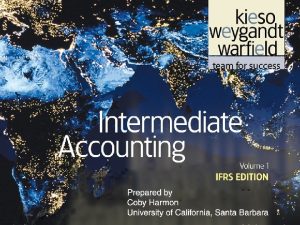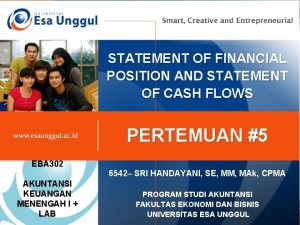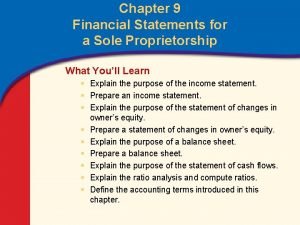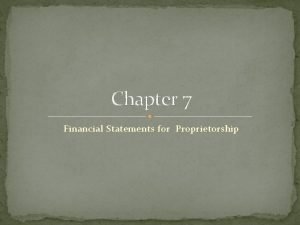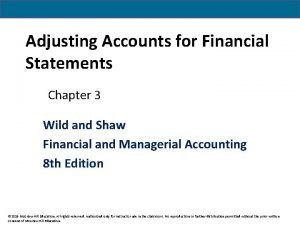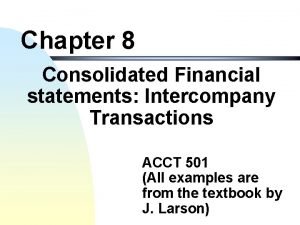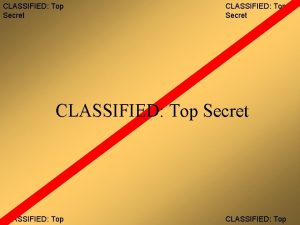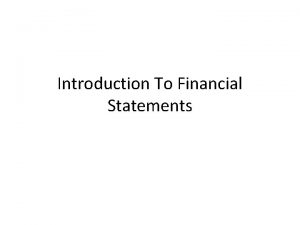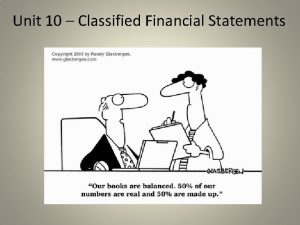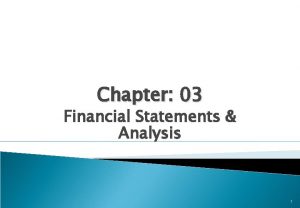Chapter 4 Classified Financial Statements Classified Statements n







- Slides: 7

Chapter 4 Classified Financial Statements

Classified Statements n Financial Statements are more useful to management , creditors, and potential investors when the elements are classified into significant sub-groups n n n Current Assets Long-term Investments Capital Assets Current Liabilities Long-term Liabilities Owner’s (shareholder’s ) Equity

Classified Statements n Current Assets are cash and other resources that will be realized within one year of the balance sheet date or the company’s operating cycle. n n Long-term Investments are resources that can be realized in cash. However, the conversion into cash is not expected within one year or the operating cycle. n n Current Assets are listed Order of Liquidity. They usually include Stocks or Bonds of other companies. Capital Assets are long-lived assets used in the operation of the business to produce and distribute products or provide services. Unlike Current Assets, which will be used or consumed in the current accounting period, Capital Assets provide benefits over several accounting periods. n Capital Assets are listed in Order of Permanency.

Tangible vs. Intangible n n Tangible Capital Assets may include property, plant, equipment, natural resources (mineral deposits, oil & gas reserves, and timber). Intangible Capital Assets provide future benefits through special privileges they convey. They include patents, copyrights, and trademarks.

Liabilities n Current Liabilities are obligations that are reasonably expected to be paid within oneyear or the operating cycle n n Salaries, A/P, Notes Payable, Income Taxes, Sales Taxes, Current Payments on Long-term Liabilities are obligations expected to be paid after one year. n Mortgage Payable, Pensions, Bonds Payable


Using Financial Statement Information Testing Liquidity Working Capital = Current Assets- Current Liabilities Current Ratio = Current Asset ÷ Current Liabilities
 Classified statement of financial position
Classified statement of financial position Cash debt coverage ratio
Cash debt coverage ratio Chapter 03 financial analysis
Chapter 03 financial analysis Chapter 3 adjusting accounts for financial statements
Chapter 3 adjusting accounts for financial statements Sole proprietorship income statement
Sole proprietorship income statement Chapter 7 financial statements for a proprietorship
Chapter 7 financial statements for a proprietorship Chapter 3 adjusting accounts for financial statements
Chapter 3 adjusting accounts for financial statements Chapter 8 separate financial statements
Chapter 8 separate financial statements
